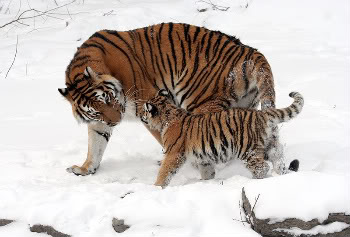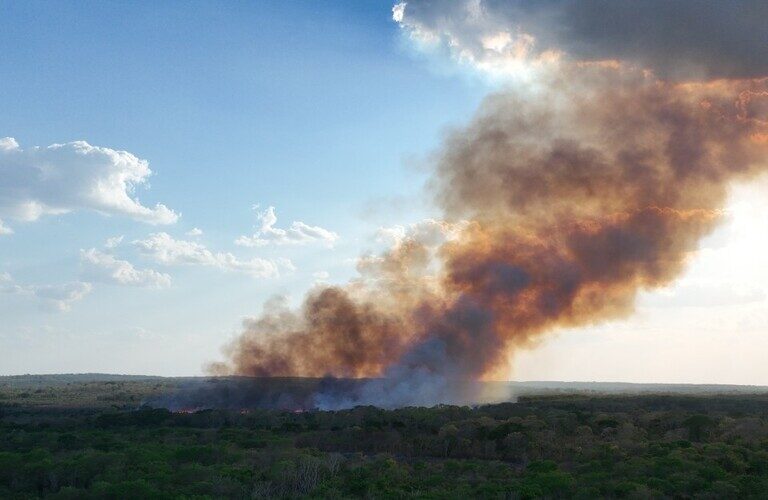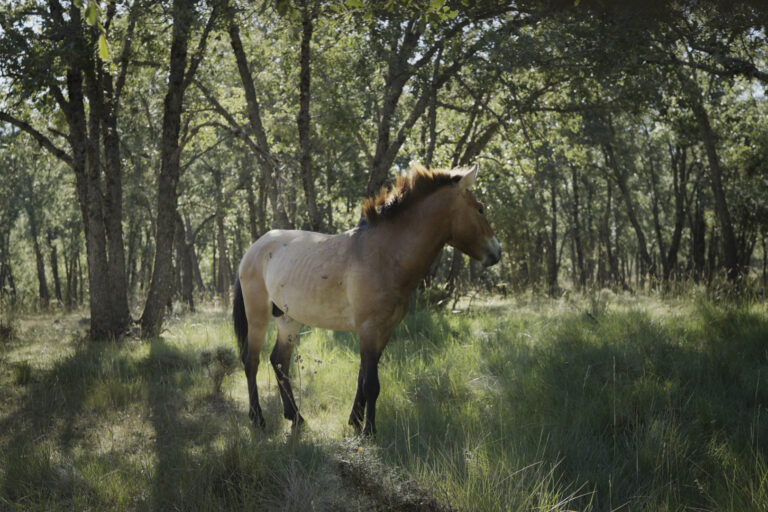There were two bright spots in tiger conservation, India and Russia, but both have dimmed recently. Last year India announced that a new survey found only 1,411 tigers, instead of the previous estimation of 3,508, and now Russian tigers may be suffering a similar decline.
The Siberian Tiger Monitoring Program—a collaboration between the Wildlife Conservation Society (WCS) and several Russia government organizations—has found evidence that after a decade of stability the Amur tiger’s (popularly known as the Siberian Tiger in the west) population may be falling. This year’s annual survey, which covers only a portion of tiger habitat in Russia, found only 56 adult tigers: a forty percent decrease from the average of 95 tigers. While the cause of this year’s decline may be weather-related, researchers fear something far more insidious is going on.
“We’re deeply concerned,” said Yuri Dunishenko, a scientist at the All-Russia Wildlife Research Institute in Khabarovsk, Russian Far East, and a coordinator of the Siberian Tiger Monitoring Program. “Deep snows this past winter may have forced tigers to reduce the amount they traveled, making them less detectable, but nonetheless, we’ve seen a 4-year trend of decreasing numbers of tigers and this is most likely due to poaching. It’s time to respond.”

Amur tiger, also known as the Siberian tiger, and cub at Buffalo zoo. Photo by: Dave Pape. |
Amur tigers are poached for the lucrative black market in tiger parts, including tiger skins, meat, and other body parts for use in traditional Chinese medicines, even though the effectiveness of these medicines has never been proven.
Researchers also found that tiger prey—red deer and roe deer—in far-east Russia is declining, but they don’t believe this is why tigers are disappearing.
“If tiger numbers were responding to the reduced number of prey we would expect there to be a lag before we saw tigers decrease. The fact that both prey and tigers are falling simultaneously strongly suggests that poaching is the driving force,” said Dimitri Pikunov, one of the coordinators of the monitoring program.
Researchers say that improved laws in Russia, more anti-poaching teams, and better protections—for tigers and their prey—in reserves are necessary to stop the present decline before it worsens. As if to underscore the urgency felt by conservationists, the day before the annual survey was released to media, a young male tiger was found dead in Russia with two bullets in his head.

Amur tiger. Photo by: Rhett A. Butler. |
“Russia’s tigers have been a stand-out success story,” said Judy Mills, the moderator of the International Tiger Community, an alliance of 40 organizations. “This apparent sudden, marked decline should act as a reminder of why regional efforts must urgently be strengthened in response to increasingly sophisticated criminal networks.”
Amur tigers (Panthera tigris altaica) are the largest tiger subspecies, making it the largest cat in the world. From 1995 to 2005 the Amur tiger population had remained steady while most other subpopulations suffered declines. In 2005 the last survey of the whole Amur tiger population found 428-502 tigers. This has made Siberian tiger conservation a cause for celebration—until now.
Three subspecies of tiger already vanished in the 20th Century: the Javan, the Balinese, and the Caspian tiger.
Related articles
Tiger brutally killed in zoo, body parts taken to sell for Chinese medicine

(08/25/2009) Poachers broke into the Jambi Zoo on Saturday morning in Indonesia. Using meat they drugged a female Sumatran tiger named Sheila and then skinned her in the cage. They left behind very little of the great cat: just her intestines and a few ribs. Authorities suspect that the tiger’s body parts will be sold in the thriving black market for Chinese medicines where bones are used as pain killers and aphrodisiacs.
Indian tiger reserve no longer has tigers
(07/15/2009) Panna National Park, one of India’s tiger reserves, no longer supports tigers, reports BBC News.
Chinese prefer tigers in the wild over tigers on their plates
(07/02/2008) A new survey shows that most Chinese would rather have tigers living in the wild than tiger products on their dinner plates. However the poll also revealed some notable contradictions in attitudes toward the trade in tiger parts.
India has 1400 tigers — not 3500
(03/13/2008) A census of India’s reserves found 1,411 tigers rather than the 3,508 estimated previously, according to the State Ministry of Environment and Forests.
Threatened Amur tiger shows signs of recovery
(10/31/2007) In a world where many animals are under siege, the Amur tiger — popularly known in the West as the Siberian tiger — offers an encouraging message: the population of the huge cat is showing signs of recovery.
First park established in Russian Far East
(06/08/2007) Russia has established the first national park in the far eastern part of the country. The initiative seeks to protect endangered Amur tigers from extinction.
Tiger parts trade must be banned to save great cats
(06/05/2007) Trade in tiger products must be banned if tigers are to survive in the wild, reports a study published in Bioscience. The paper, The Fate of Wild Tigers, characterizes the decline in wild tiger population as ,catastrophic, and urges governments to outlaw all trade in tiger products from wild and captive-bred sources as well as step up conservation efforts.
Siberian tiger population stabilizes according to new census figures
(06/28/2005) Results of the latest full range survey indicate that tiger numbers in Russia appear to be stable, say the coordinators of a 2005 winter effort to count the animals, led by the New York-based Wildlife conservation Society.
Poachers kill flagship tiger for conservation efforts in Russia
(04/04/2005) Poachers kill flagship tiger for conservation efforts in Russia














